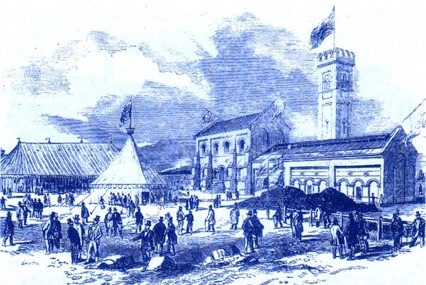Welcome to a journey through the forgotten stories of London’s history, where hidden water tunnels played a significant role in shaping the city we know today. Join us as we delve into the depths of London’s underground, uncovering the secrets and mysteries that lie beneath the bustling streets. From ancient Roman aqueducts to Victorian engineering marvels, these hidden water tunnels hold a wealth of historical significance and continue to impact the city’s infrastructure.
The Roman Aqueducts: A Glimpse into the Past
London’s history dates back to the time of the Romans, who recognized the importance of a reliable water supply. The Romans constructed aqueducts to transport water from natural sources to the growing city. These remarkable engineering feats allowed for the efficient distribution of water and the development of public baths, fountains, and even ornamental gardens.
The remains of these ancient aqueducts can still be found today, serving as a testament to the ingenuity and forward-thinking nature of the Roman civilization. These hidden water tunnels, often referred to as subterranean rivers, weave their way beneath the modern city, whispering stories of a bygone era.
Medieval Wells and the Rise of London’s Water Trade
As London grew in size and population during the medieval period, the demand for water increased exponentially. Wells became a common sight, providing a local water source for households and industries. However, with limited natural springs within the city, the water trade emerged as a crucial aspect of London’s economy.
Water carriers known as “watermen” would transport water from distant sources such as springs or rivers to various neighborhoods. These watermen played a vital role in ensuring that Londoners had access to clean water. The existence of hidden water tunnels allowed for the efficient transport of water, reducing the reliance on surface-level wells and enhancing the city’s water distribution network.
The Great Fire of London and the Birth of Water Infrastructure
In 1666, London was ravaged by a devastating fire that swept through the city, leaving destruction in its wake. This catastrophic event led to the realization that a comprehensive water infrastructure was necessary to prevent future disasters. As a result, the London Bridge Waterworks Company was established, marking a significant milestone in the city’s water management.
The company constructed a network of underground water tunnels, which tapped into the River Thames, allowing for a reliable water supply throughout the city. This innovative approach to water distribution laid the foundation for future developments in London’s water infrastructure.
Victorian Engineering Marvels: The London Sewer System
The rapid urbanization of London during the Victorian era posed new challenges for the city’s water management. With a growing population and increased industrialization, the need for an efficient sewage system became evident. Sir Joseph Bazalgette, a visionary engineer, designed and implemented the revolutionary London sewer system.
Beneath the bustling streets, hidden water tunnels known as sewers were constructed, carrying away wastewater and preventing the outbreak of diseases. Bazalgette’s sewer system not only improved public health but also played a crucial role in the city’s overall development. The hidden water tunnels became a lifeline for a growing metropolis, ensuring its sustainability and future prosperity.
Modern-Day Impact and Preservation Efforts
Today, the hidden water tunnels of London continue to play a vital role in the city’s infrastructure. These tunnels serve as conduits for water supply, sewage management, and even transportation networks. Their significance cannot be understated, as they support the functioning of a bustling metropolis.
Preservation efforts are underway to protect and maintain these historical structures. Recognizing their cultural and architectural value, authorities are working to ensure that the hidden water tunnels are preserved for future generations to appreciate and learn from. Tours and exhibitions offer a glimpse into the underground world, allowing visitors to immerse themselves in the rich history of London’s hidden water tunnels.
Conclusion
In conclusion, the hidden water tunnels of London have left an indelible mark on the city’s history. From the ancient Roman aqueducts to the Victorian sewer system, these tunnels have shaped London’s development and continue to serve as crucial infrastructure. Exploring the forgotten stories of these hidden water tunnels provides us with a deeper understanding of the city’s past and a greater appreciation for the engineering marvels that lie beneath our feet. Let us embrace the opportunity to uncover these forgotten tales and preserve the legacy of London’s hidden water tunnels for generations to come.
